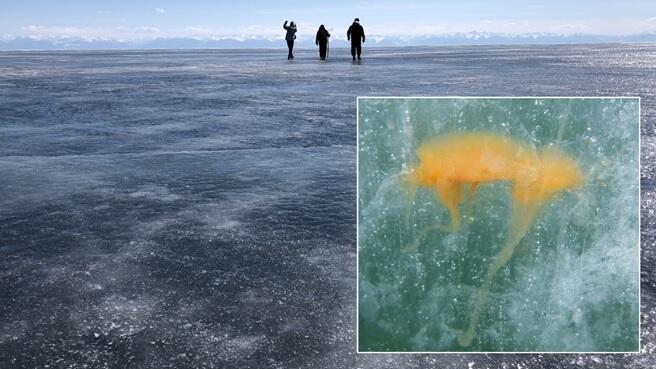A research group consisting of Professor Kei Toda of the Faculty of Advanced Science and Technology at Kumamoto University and the Institute of Limnology of the Russian Academy of Sciences revealed that phytoplankton growing in ice-covered lakes produce sulfur atom-containing zwitterions to prevent themselves from freezing. For 10 years, the research group conducted field research at Lake Baikal in Russia on phytoplankton reproduction and analyzed the chemical compounds produced. They found that not only marine plankton but also their freshwater counterparts have the genetic ability to produce dimethylsulfoniopropionate (DMSP) zwitterions that help them survive in ice and water at 0℃. The study findings were published in the November 25 issue of the journal Communications Biology.

Provided by Kumamoto University
Marine phytoplankton produce and store DMSP (zwitterions containing sulfur atoms) in their cells to cope with the osmotic pressure created by the high salinity of seawater. The DMSP decomposition product dimethyl sulfide is known as the component that produces the smell of the sea. However, freshwater plankton species were speculated to not produce DMSP because they do not require osmotic adjustment.
Since 2012, the research group conducted eight expeditions to Lake Baikal, mostly in March and April, to search for phytoplankton reproduction and analyze DMSP and related chemicals. It was found that a type of dinoflagellate, which is a freshwater phytoplankton, blooms in April and produces DMSP, a well-known marine chemical. The colder the temperature, the more is the DMSP produced. Moreover, on warmer days, unwanted DMSP within the plankton was found to be released into the lake water.
This dinoflagellate also utilizes the sulfur atoms of sulfate ions, of which there are few in Lake Baikal, and converts them into DMSP. The efficiency of this conversion process was found to be 2,000 times higher than the representative value for seawater. DMSP was also found to be an important chemical for plankton reproduction in freshwater Lake Baikal during periods of freezing temperatures.
Toda commented, "My planned trip to Lake Baikal in April 2020 was not possible because of the COVID-19 pandemic, and now, I am not able to travel to Russia for other reasons. However, the discovery of plankton blooms and associated chemical production in the ice has been one of the most impressive study findings to date. Our unique 'analytical chemistry' research that allows us to track chemicals in the field has been a powerful weapon. We hope that many people will understand the interesting role that compounds produced by plankton play, which we determined through our field research."
Journal Information
Publication: Communications Biology
Title: Abundant production of dimethylsulfoniopropionate as a cryoprotectant by freshwater phytoplanktonic dinoflagellates in ice-covered Lake Baikal
DOI: 10.1038/s42003-023-05573-9
This article has been translated by JST with permission from The Science News Ltd. (https://sci-news.co.jp/). Unauthorized reproduction of the article and photographs is prohibited.




